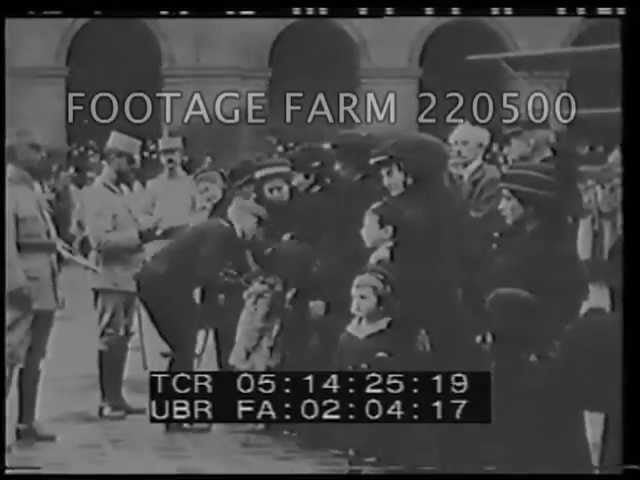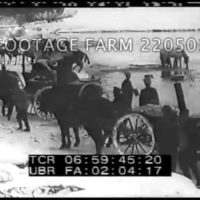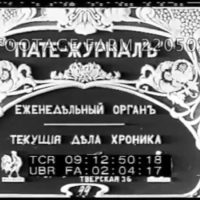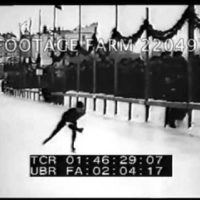
Related

1914 Russian Hospital & Wounded 220497-08 | Footage Farm

Russian Troops World War One 220501-12 | Footage Farm

Early Russian 220503-03 | Footage Farm

1914 - WWI, Preparations in France & Russia 220494 09 | Footage Farm

1911 Russia Various 220496-06 | Footage Farm

WW1 Russian Activities 220497-11 | Footage Farm

1914 - Russian Tsar & Family in Moscow 220497-13 | Footage Farm

Russian in WWI Pt2/3 220505-02X | Footage Farm

Russian Revolution Scenes 220675-01 | Footage Farm
1914 Russian Hospital & Wounded; Home Front 220500-13 | Footage Farm
Summary
If you wish to acquire broadcast quality material of this reel or want to know more about our Public Domain collection, contact us at info@footagefarm.co.uk
[1914 - WWI - Russian Hospital & Wounded; Home Front Sewing Supplies; Animated Battle Map]
Russian Main title
05:00:40 Russian Inter-title: Moscow - Hospital for war wounded granted by Mr Tatischev to the United Bank.
05:00:46 Patients w/ nurses in ward, man reading. Nurse feeding seated man; man in bed w/ arm in cast eating.
05:01:22 Men in hospital looking at map of Europe on wall.
05:01:36 Wounded sitting outside w/ women; with nurses.
05:01:59 Russian Inter-title: Moscow - making of underwear for the wounded in the house of the Serb consul (?).
05:02:05 Women at sewing machines making sheets.
05:02:47 Russian Inter-title: ??
05:02:55 Animated map of combat operations on the Western Front. The End.
WW1 Injured; Horrors of War; Recuperation; War Effort; Animation;
There were special court cameramen and photographers who captured the daily life of the Romanov family. The Company of von Gun filmed the Tsar, and with the permission of the Ministry of the Court, showed these films in movie theatres beginning in 1907. Before the February 1917 Revolution, the von Gun Company was the main provider of the Tsar's chronicles in the Russian film industry. After 1907 other filmmakers were permitted to film the Royal family, including A. Drankov, V. Bulla (the elder), Khanzhonkov Company, Pate Company, and others. Before the beginning of World War I a newsreel became popular capturing military parades, holidays, reviews and drills. Many are devoted to the Fleet. They document everyday life of the Baltic Sea and Black Sea squadrons. Some of the newsreels document the fire of the Maly Theatre in Moscow, mass gymnastics, auto and motor races, zoos and animal preserves, and the life of peoples of the Russian Empire. The objects of filming were political and cultural figures, the construction of warships, the Moscow flood, the testing of new agricultural equipment and the oil industry in Baku. There are also films showing the towns of Russia, etc. During World War I, cameramen captured events on all fronts. Before 1915, the exclusive rights to film battles belonged to the Film Department of the Skobelev Committee. The Skobelev Committee of the Assistance to the Wounded Soldiers of the General Staff was founded in November 1904 as a public organization. By the order of the Scobelev Committee many cameramen filmed the events of the World War I, such as Englishman Arcol (representative of Pate Company, filmed on South-Western and Caucasus fronts), cameramen E.D. Dored (represented American companies) and P.V. Ermolov, (filmed events on Caucasus front); P.K. Novitskiy (Gomount Company), N.M. Toporkov, K.E. von Gan, A.K. Gan-Jagelskiy, made filming in the General Headquarters. Other cameramen such as: A. G Lemberg, S, Zebel, Trushe, etc. also worked at the fronts. Cameramen filmed the war not only on the fronts but also from the rear. Since the first month of the war until 1917 the Scobelev Committee produced about 70 newsreels. From 1914 to 1915 cameramen of the Scobelev Committee produced 21 series of the newsreel "Russian Military Chronicle". The materials of this newsreel were used many times for the separate films made by Scobelev Committee and other film companies. Read more at: http://www.pbs.org/redfiles/rao/archives/rgakfd/textind10.html
